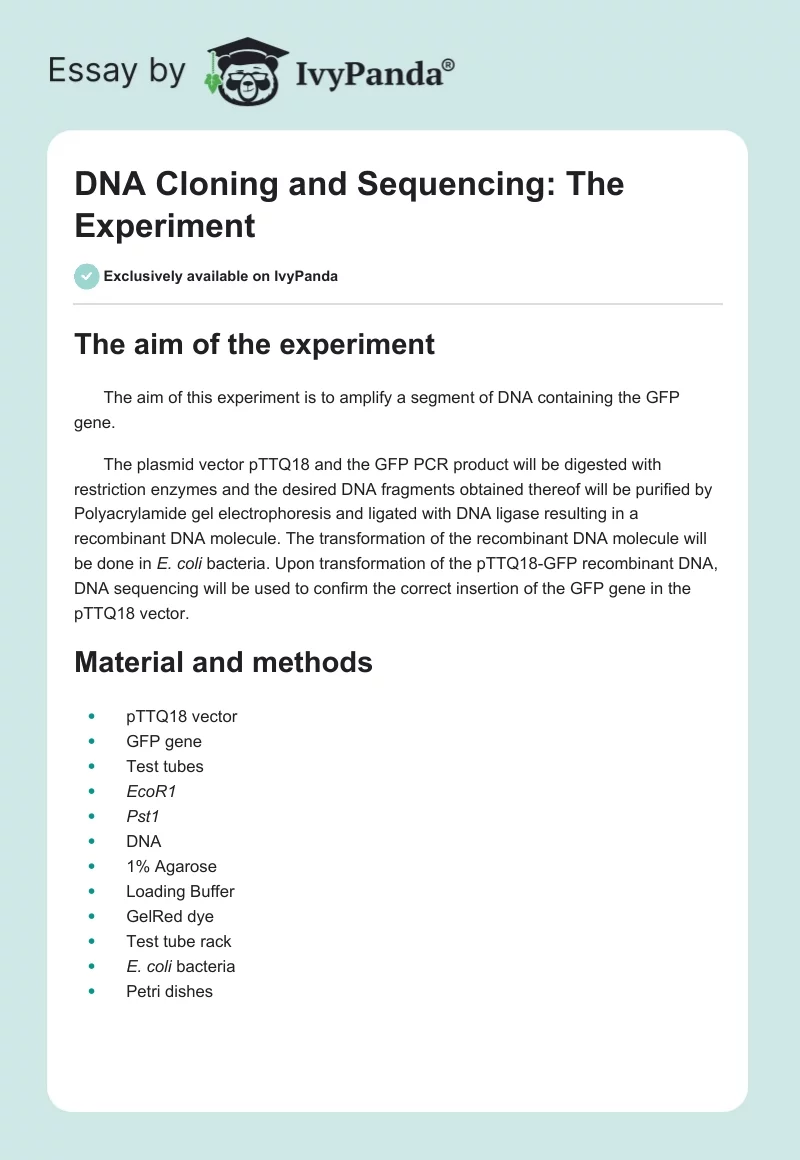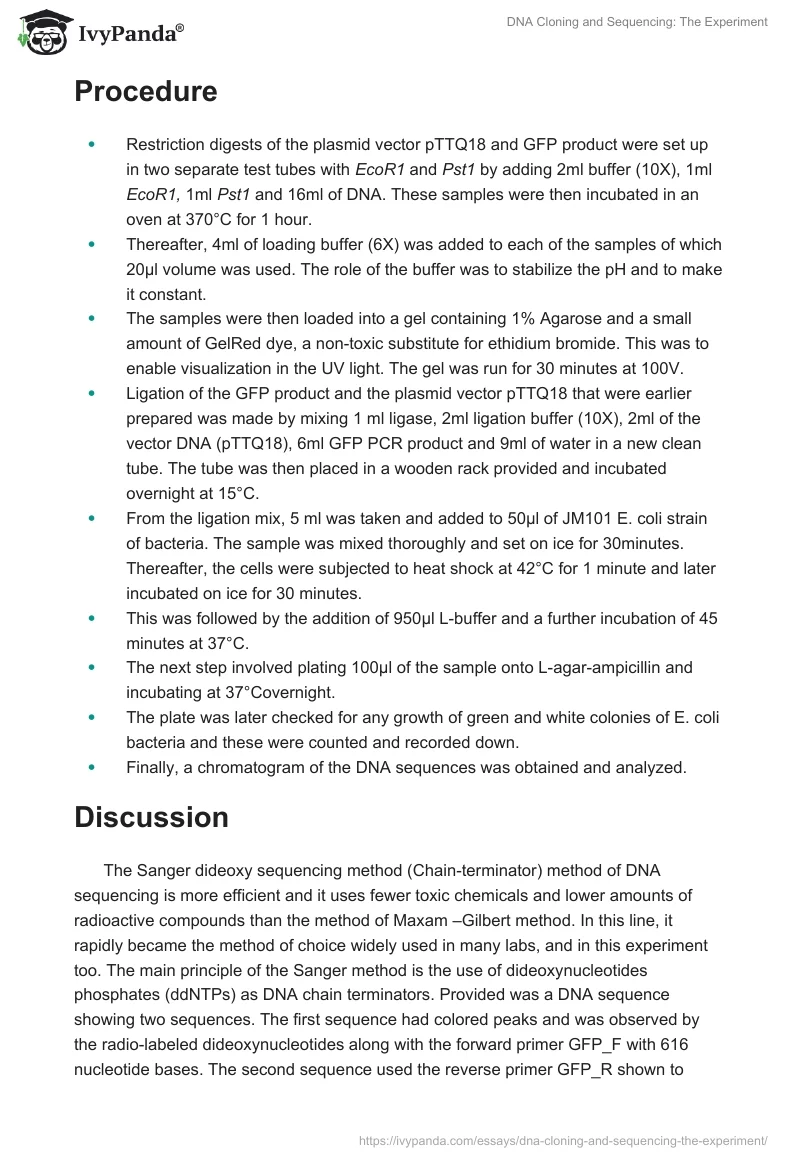The aim of the experiment
The aim of this experiment is to amplify a segment of DNA containing the GFP gene.
The plasmid vector pTTQ18 and the GFP PCR product will be digested with restriction enzymes and the desired DNA fragments obtained thereof will be purified by Polyacrylamide gel electrophoresis and ligated with DNA ligase resulting in a recombinant DNA molecule. The transformation of the recombinant DNA molecule will be done in E. coli bacteria. Upon transformation of the pTTQ18-GFP recombinant DNA, DNA sequencing will be used to confirm the correct insertion of the GFP gene in the pTTQ18 vector.
Material and methods
- pTTQ18 vector
- GFP gene
- Test tubes
- EcoR1
- Pst1
- DNA
- 1% Agarose
- Loading Buffer
- GelRed dye
- Test tube rack
- E. coli bacteria
- Petri dishes
Procedure
- Restriction digests of the plasmid vector pTTQ18 and GFP product were set up in two separate test tubes with EcoR1 and Pst1 by adding 2ml buffer (10X), 1ml EcoR1, 1ml Pst1 and 16ml of DNA. These samples were then incubated in an oven at 370°C for 1 hour.
- Thereafter, 4ml of loading buffer (6X) was added to each of the samples of which 20µl volume was used. The role of the buffer was to stabilize the pH and to make it constant.
- The samples were then loaded into a gel containing 1% Agarose and a small amount of GelRed dye, a non-toxic substitute for ethidium bromide. This was to enable visualization in the UV light. The gel was run for 30 minutes at 100V.
- Ligation of the GFP product and the plasmid vector pTTQ18 that were earlier prepared was made by mixing 1 ml ligase, 2ml ligation buffer (10X), 2ml of the vector DNA (pTTQ18), 6ml GFP PCR product and 9ml of water in a new clean tube. The tube was then placed in a wooden rack provided and incubated overnight at 15°C.
- From the ligation mix, 5 ml was taken and added to 50µl of JM101 E. coli strain of bacteria. The sample was mixed thoroughly and set on ice for 30minutes. Thereafter, the cells were subjected to heat shock at 42°C for 1 minute and later incubated on ice for 30 minutes.
- This was followed by the addition of 950µl L-buffer and a further incubation of 45 minutes at 37°C.
- The next step involved plating 100µl of the sample onto L-agar-ampicillin and incubating at 37°Covernight.
- The plate was later checked for any growth of green and white colonies of E. coli bacteria and these were counted and recorded down.
- Finally, a chromatogram of the DNA sequences was obtained and analyzed.
Discussion
The Sanger dideoxy sequencing method (Chain-terminator) method of DNA sequencing is more efficient and it uses fewer toxic chemicals and lower amounts of radioactive compounds than the method of Maxam –Gilbert method. In this line, it rapidly became the method of choice widely used in many labs, and in this experiment too. The main principle of the Sanger method is the use of dideoxynucleotides phosphates (ddNTPs) as DNA chain terminators. Provided was a DNA sequence showing two sequences. The first sequence had colored peaks and was observed by the radio-labeled dideoxynucleotides along with the forward primer GFP_F with 616 nucleotide bases. The second sequence used the reverse primer GFP_R shown to have 616 nucleotide bases. The two sequences from the forward primer GFP and the reverse primer GFP had the same length of the nucleotides because they were observed from the same gene.


